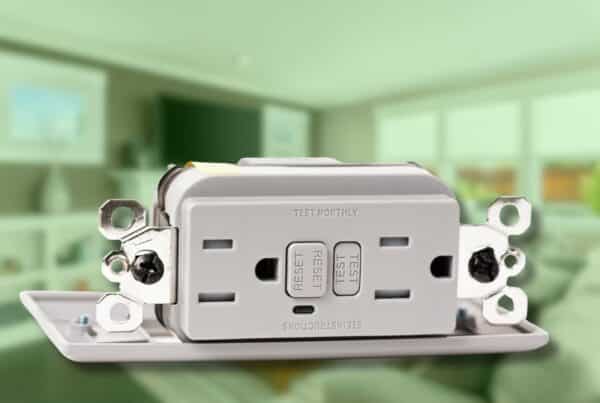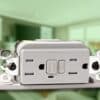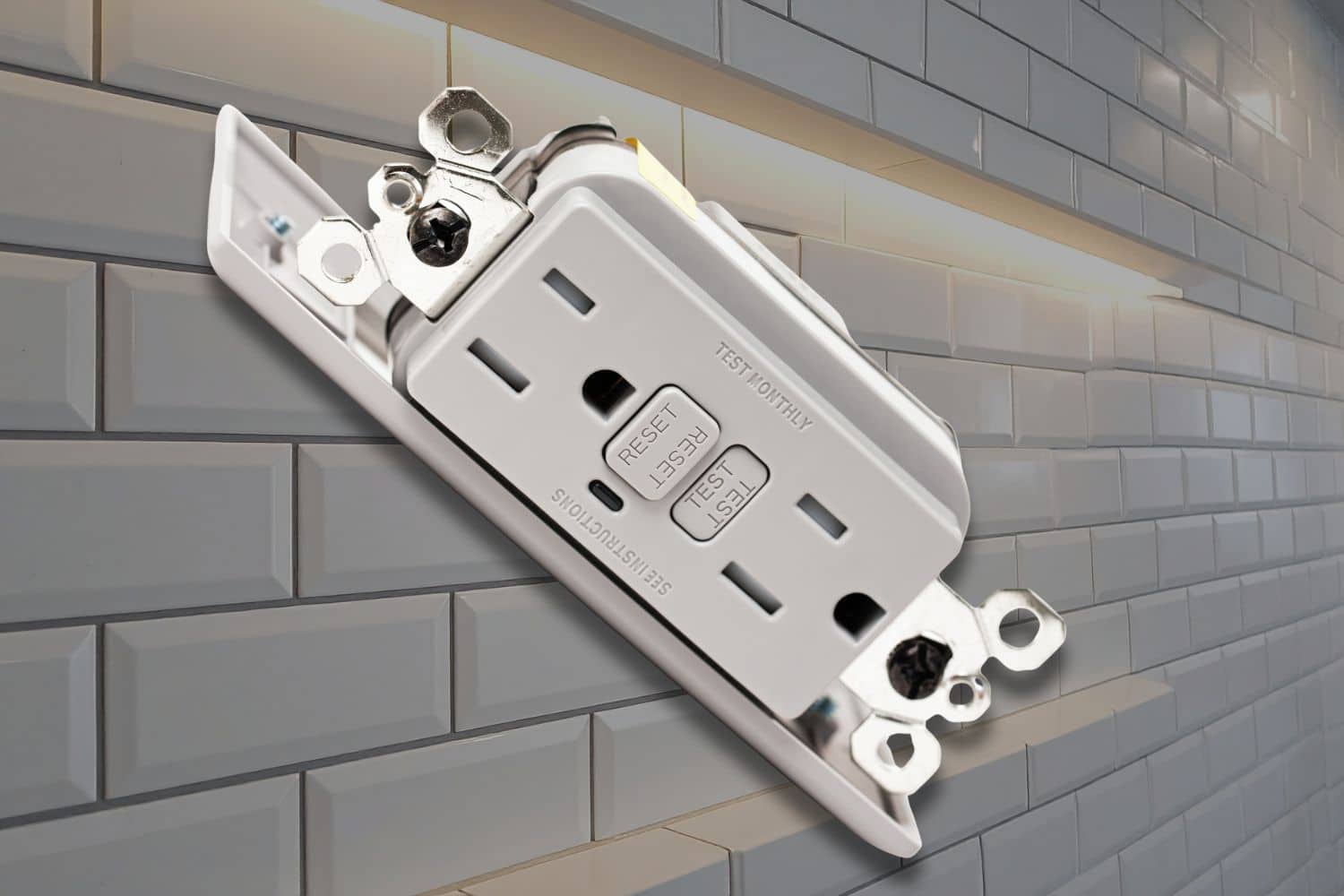
So how do you know when a GFCI outlet has gone bad? Here’s what to watch for, how long they last, and when to call in a professional.
Ground Fault Circuit Interrupter outlets, or GFCIs, are one of the most important electrical safety devices in modern homes.
The Consumer Product Safety Commission estimates that GFCIs could prevent more than two-thirds of the roughly 400 electrocutions that occur annually in U.S. homes if installed and working properly.
The catch is, like any electrical component, GFCIs don’t last forever.
What a GFCI Outlet Does
A GFCI outlet compares the current going into a circuit with the current coming back out. If there’s even a tiny difference (as small as 4 to 6 milliamps) it trips the circuit and cuts power. That’s often enough to save someone from a dangerous or fatal shock.
The National Electrical Code requires GFCIs in areas where water and electricity are likely to meet. That includes:
- Kitchens
- Bathrooms
- Garages
- Laundry areas
- Crawlspaces
- Unfinished basements
- Outdoor outlets
If your home is missing GFCIs in any of these areas, it may not meet current safety standards.
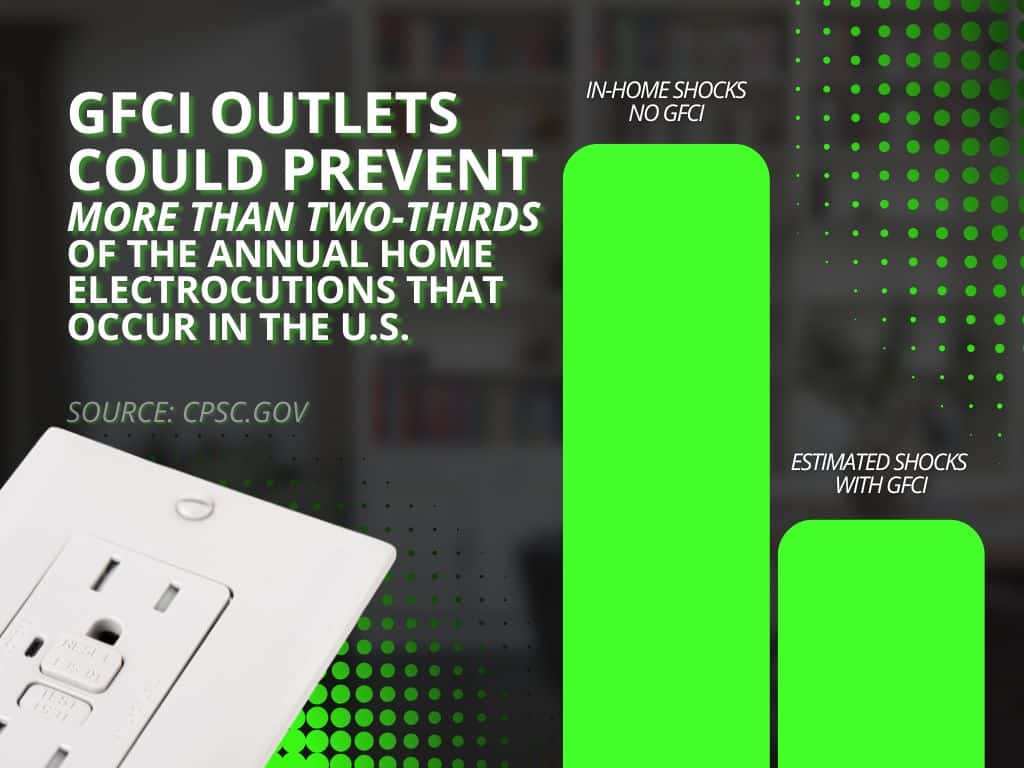
Signs a GFCI Outlet Has Gone Bad
1. The Reset Button Doesn’t Work
Every GFCI has “test” and “reset” buttons. If the outlet trips but the reset button does nothing, the outlet itself may be failing.
2. No Power to Devices
If you plug in a lamp or appliance and it doesn’t work, and you’ve confirmed the breaker hasn’t tripped, the GFCI may have failed internally.
3. Frequent or Nuisance Tripping
A GFCI should trip only when it senses a ground fault. If it trips repeatedly with no clear cause, the device may be at the end of its lifespan.
4. Physical Wear or Damage
Burn marks, cracks, or outlets that feel loose are all signs it’s time for replacement. These issues create fire hazards and should be addressed immediately.
5. Failed Safety Test
Manufacturers recommend testing GFCIs monthly. Press the “test” button and confirm the power shuts off, then press “reset” to restore it. If either step fails, the outlet has gone bad.
How Long Should GFCIs Last?
On average, GFCI outlets last about 10 years, though their lifespan can be shorter in damp or outdoor locations.
One report found that outlets in bathrooms and kitchens fail faster due to frequent exposure to humidity.
In some cases, outlets fail in as little as 5 years. That’s why monthly testing is so important.
What Causes GFCI Outlets to Fail?
Several issues can lead to a bad GFCI outlet, so it’s important to know so you can avoid them.
- Moisture intrusion in bathrooms, kitchens, or outdoor outlets
- Electrical surges from storms or faulty appliances
- Loose wiring behind the outlet
- Normal wear and tear from years of use
Sometimes the issue is not the outlet itself but the circuit behind it. A licensed electrician or inspector can help confirm the source of the problem.
Safety Risks of a Bad GFCI
A failed GFCI outlet won’t trip when it should. That leaves you unprotected from electrical shock.
Nearly 70% of electrical accidents involving children in the home are preventable with properly functioning GFCIs and tamper-resistant outlets.
Bad outlets can also increase fire risk. According to the National Fire Protection Association (NFPA), electrical failures or malfunctions are a leading cause of home fires, contributing to an estimated 46,700 fires annually in the U.S.
Can Homeowners Replace a GFCI Outlet Themselves?
A mistake with wiring can eliminate the safety function altogether or create a new hazard.
If you’re not trained in electrical work, it’s best to call a licensed electrician. A professional can also check if your home has enough GFCI protection and whether other outlets or circuits need updating.
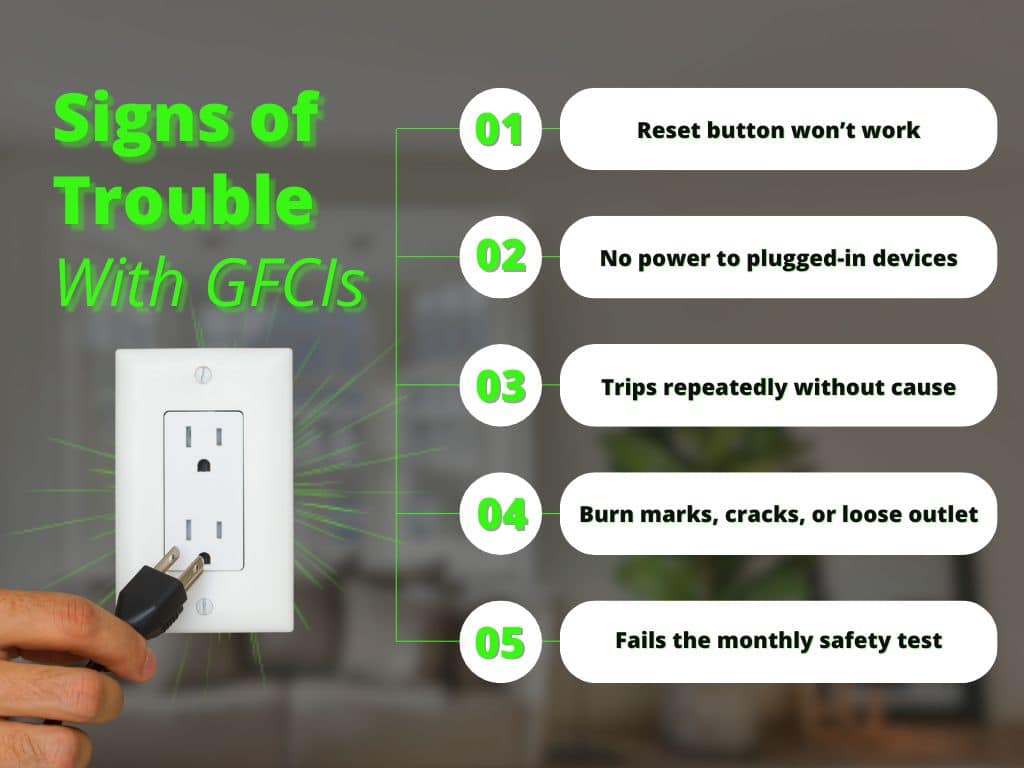
What Our Inspectors Find Often
During inspections in Georgia and the surrounding areas, Avalon’s team often sees:
- GFCIs missing in kitchens, bathrooms, or outdoor areas
- Outlets that fail safety tests during the inspection
- Older outlets with signs of overheating or loose wiring
These issues don’t just impact safety. They can also affect real estate transactions. Buyers often ask for faulty GFCIs to be repaired or replaced before closing.
Other Related Questions People Ask
How often should I test my GFCI outlets?
Manufacturers and the ESFI recommend testing them monthly. A quick push of the button can help ensure they’re still working.
Can one GFCI protect multiple outlets?
Yes. A single GFCI can protect all outlets downstream on the same circuit. If several outlets stop working at once, the upstream GFCI may need attention.
Are GFCIs required in older homes?
They may not have been required when the home was built, but current NEC standards do require them. Inspectors often recommend upgrades to meet modern safety standards.
What other electrical issues should I look for in an inspection?
Common findings include outdated wiring, overloaded panels, and missing AFCI breakers. Avalon inspectors provide clear reports so buyers know what needs repair or replacement.
When to Call a Professional
If your GFCI outlets won’t reset, show visible damage, or fail monthly testing, that’s how you know it’s time to call a professional. Replacing a GFCI is a relatively quick fix, but the peace of mind it provides is invaluable.
For buyers and sellers in the Atlanta area, a full inspection is the best way to confirm all outlets and circuits are safe.
Avalon Home Inspections checks electrical systems as part of every inspection, giving clients the knowledge they need to move forward with confidence.
Conclusion
GFCI outlets are simple devices that do a critical job, so it’s important to know that, when they fail, the risk of shock or fire increases.
If you’re concerned about your GFCI outlets or want a professional to evaluate your electrical system, contact Avalon Home Inspections.

